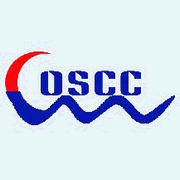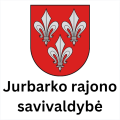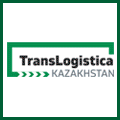Iran-Kazakhstan-Turkmenistan-railway Iran's part of the Kazakhstan-Turkmenistan-Iran will be completed by October, Deputy Foreign Minister Seyyed Abbas Araghchi said during a briefing at the Foreign Ministry of Kazakhstan, reported Payvand Iran News.
Araghchi noted that Iran pays great importance to the project, and will do its best to complete its part of the road by October.
The overall length of the Kazakhstan-Turkmenistan-Iran railway is 900 kilometers (Iran - 70 kilometers, Turkmenistan 700 kilometers and Kazakhstan - 130 kilometers).
The Islamic Development Bank is financing Turkmenistan's part of the road, and over 30 percent (over 250 kilometers) of 700 kilometers have already been completed.
Iranian "Pars Energy" company is responsible for the construction of this part of the railway.
Asian News Service, en.ca-news.org
There is more choice when flying to and from London City Airport this Summer, with lots of new destinations and increased daily flights on some our current services
British Airways commence flights to Quimper and Angers from 25 May, while CityJet are increasing their twice weekly service to Brive to five times weekly in July and August 2012. The addition of Brest and Quimper in Brittany and Angers in the Loire Valley, bring the total number of French destinations we served to 12. Allowing passengers to take full advantage of everything that country has to offer, from vineyards to horse-racing.
British Airways are also introducing the island of Menorca to its Balearic programme with flights to Mahon commencing on 25 May, adding to our current Spanish leisure destinations Mallorca and Ibiza.
BA have recently announced the launch of flights to/from Venice in Northern Italy that begin in September.
Swiss International Airlines resumes their twice daily service to/from Basel in Switzerland from 21 May, providing corporate travellers with a vital link to this important business hub. Tourists can also avail themselves of easy access to the renowned cultural capitals of Switzerland.
Flights to Scotland recently received a boost with CityJet introducing an additional rotation, increasing its daily number of flights to/from Edinburgh as well as launching a late night Sunday flight from London City to facilitate domestic travel from the capital.
London City now offers well over 40 destinations for passengers looking to travel from and to the capital. Whether flying for business or leisure, the airport is ideally placed to offer the most convenient, time-saving and hassle free experience, with minimal queues, the shortest check-in times and the highest levels of punctuality and service.
Source London City Airport
The IRU welcomes the entry into force of the Additional Protocol to the CMR Convention, which transitions from the current slow and unreliable paper-based system, to faster and more efficient electronic Consignment Notes (e-CMR) and calls upon governments to join the Additional Protocol and adopt an harmonised approach to its implementation.
Further to the entry into force of the Additional Protocol to the CMR Convention in June 2011, the IRU Goods Transport Council today encouraged an accelerated introduction of the e-CMR to improve supply chain efficiency.
Carriers can now electronically record, store and exchange CMR data with their commercial partners. This significantly improves document management by reducing the potential for human error, while increasing the efficiency of road transport operations.
The IRU Position therefore urges all Contracting Parties to the CMR Convention to accede to or ratify the Additional Protocol and calls upon Governments to harmonise practical implementation requirements.
For example, some authorities still request a paper copy in addition to an e-CMR Consignment Note which completely defeats the purpose and benefits of using an electronic system. Governments should also agree on technical standards regarding electronic signatures and authentication methods in order to experience the full benefits of e-CMR
At present, e-CMR can only be used in seven countries – Bulgaria, Czech Republic, Latvia, Lithuania, Netherlands, Spain and Switzerland – allowing carriers and commercial partners to benefit from facilitated international road transport. For e-CMR to be a truly efficient and practical tool for transport operators, other countries will need to join the Additional Protocol, allowing e-CMR to be used in more than just a limited number of European itineraries.
IRU
2012-04-27
Logistics firm announces key staff appointments
BDP International, a leading U.S.-based global logistics and transportation management firm, has significantly strengthened its presence in the U.K. market with two staff appointments. Anthony Akerman and David Marshall have joined the firm as U.K. country manager and Aberbeen branch manager respectively.
“These appointments underscore the importance of the U.K. market in the global economy, and world trade, particularly its energy and chemical sectors, where we have extensive experience and expertise,” said Yves Letange, managing director, BDP International Europe. “The chemical industry is the country’s largest export sector, contributing some £10 billion a year to its balance of payments and providing vital support for the rest of its manufacturing sector.”
BDP has been serving the global chemical industry for more than 45 years. Today the company manages more than one million TEUs of chemicals a year, and counts among its clients eight of the world’s ten largest chemical producers. It offers the same range of services in the U.K. that it offers in its other global operations, including air and ocean transport, freight forwarding, and customs and security compliance, plus project logistics for oil and gas service providers.
Based in the company’s main office in Dartford, Kent and reporting to Antwerp-based Letange, Akerman has responsibility for U.K. operations including branch locations, business development, employees, clients and vendors. He brings to BDP more than 20 years of experience in international logistics both in Asia, the U.S. and the U.K., having held positions of increasing responsibility in operations, sales, project management, multimodal supply chain management and trade lane development. Most recently he served as commercial director for Escombe Lambert Holding Ltd., a maritime shipping firm in the U.K. and Ireland. He also has served as director of commercial operations for the projects division of Agility Logistics.
Marshall is responsible for BDP’s operations in Aberdeen, Scotland which in addition to conventional transportation and logistics services, include turnkey solutions from supply chain support for new and existing production facilities to the transport of heavy-lift structures and specialized logistics for offshore equipment and Oil Country Tubular Goods (OCTG). He likewise has more than 20 years of industry experience, during which he has worked in air transport, logistics, operations, IT, product development and project management for a number of the world’s leading multinational forwarding firms.
swb&r
Day Boat Seafood LLC of Lake Park, Florida has entered the U.S. North Atlantic swordfish longline and buoy gear fishery into full, independent, third-party assessment against the Marine Stewardship Council’s (MSC) principles and criteria for sustainable and well-managed fisheries. If successful, swordfish harvested from this area will be eligible to display the MSC ecolabel.
Vessels fishing in the Southeast U.S. North Atlantic portion of the fishery, which fish predominantly in the federal waters of the east coast of Florida, are currently certified. The new assessment will determine the sustainability of the U.S. fishery in the North Atlantic and excludes the Caribbean and the Gulf of Mexico. This is the second MSC certification sought by Day Boat Seafood and, if certified, would offer a significant growth in the size of the U.S. swordfish fishery covered in the MSC program over the currently certified fishery conducted by Day Boat Seafood in the Southeast U.S. North Atlantic swordfish fishery.
MSC
A scientific study on x-ray scanning of vehicles at borders shows that the process causes no danger to drivers’ health or safety. However, information on the scanning process is often non-existent and internationally accepted scanning procedures are not always followed. Scientific study recommends developing an x-ray scanning certificate to accelerate and facilitate the process.
Further to the adoption of an IRU Resolution on Limiting the health and safety risks of x-ray vehicle inspection technology for commercial vehicle drivers, and due to border, port and other inspection authorities increasingly and repeatedly using non-intrusive inspection - “x-ray” - technology to generate interior images of commercial vehicles, a scientific study was commissioned with the aim of protecting drivers from any possible negative health effects of x-ray machines.
The field study shows that there are no occupational health and safety hazards for drivers, even if repeatedly exposed to x-ray scanning. Measurements and analysis also show that radiation effects do not continue in the vehicle after it has been scanned.
IRU Vice President and President of the IRU Goods Transport Council (CTM), Pere Padrosa, said “Given the importance of this issue, the IRU partnered with the International Labour Organization (ILO) and the International Transport Workers Federation (ITF) to investigate potential risks to drivers’ health and safety during x-ray scanning of commercial vehicles. The study results clearly show that information about the scanning process needs to be improved, while it is also crucial to streamline non-harmonised and redundant inspections that currently take place. In this respect, governments have an indisputable role and responsibility to implement scientific recommendations.”
Indeed, the scientific study highlighted that procedures at borders were not always followed according to internationally recognised standards and therefore recommended that concerned ministries and competent border authorities:
- Install appropriate information panels wherever x-ray scanning is performed;
- Develop x-ray scanning certificates to facilitate and accelerate the scanning process;
- Ensure the implementation of internationally accepted x-ray scanning procedures;
- Improve the education of drivers, customs officers and operators on the functioning and risk of x-ray scanning.
IRU
DANISH shipping giant, Maersk Line, the world's largest container shipping company, has announced it will impose US$300 per TEU peak season surcharge on its Asia-Latin America loops with effect from May 20 due to a shortage of 20-foot dry containers.
The May peak season surcharge will be applied to services from Taiwan to Latin America (excluding Brazil, Uruguay, Paraguay and Argentina) and from the Far East to Colombia, Puerto Rico, and the US Virgin Islands, according to a notice to trade.
Additionally, the carrier already levied the same surcharge on April 23 from the service sailing from the Far East (excluding Taiwan) to Latin America (excluding Colombia, Puerto Rico and the US Virgin Islands).
Maersk also said it would increase rates by $500 per TEU on services from Far East Asia to the east coast of South America from May 15.
Shipping Gazette - Daily Shipping News
STATE-OWNED Fonds Strategique d'Investissement (FSI) is seeking a EUR150 million (US$198 million) stake in Marseilles-based shipping giant, CMA CGM, according to Le Journal du Dimanche.
The Paris Sunday newspaper said the deal could be concluded within two to three weeks, a move supported by banks that worry about the carrier failing to pay interest on its debt.
But when the two tried to make a deal two years ago, CMA CGM owners found FSI's demands for control too demanding and walked away.
When that fell through, CMA CGM borrowed US$500 million in bonds from Turkey's Yildirim Group, giving access to 20 per cent of CMA CGM's share capital on the paper's maturity, noted London's Containerisation International. Yildirim also gained three seats on CMA CGM's board.
CMA CGM, the world's third container ocean carrier, has improved operating performance, beating most other top 20 shipping lines, but its balance sheet is weak labouring under a heavy debt burden.
Shipping Gazette - Daily Shipping News
CONGESTION at New Zealand north island Port of Tauranga has eased as the Ports of Auckland returns to full operating capacity with the end of strikes and labour disruptions.
Tauranga has stopped docking ships that want to divert from Auckland, with MetroPort utilisation peaking at 220 per cent and the Tauranga Container Terminal handling a record 20,200 TEU a week compared to its normal 11,000-13,000 TEU.
Tauranga Container Terminal (TCT) and MetroPort Auckland operations have continued at more than 100 per cent capacity during the past fortnight, reports the UK's Port Strategy, but this is expected to ease shortly.
Shipping Gazette - Daily Shipping News
JAPAN'S Mitsui OSK Lines president Koichi Muto has announced that MOL has established a wholly owned subsidiary, MOL (Peru) in Lima.
"The country was chosen because it shows more stable growth than other South American nations. With the new subsidiary, MOL will consolidate its business structure and further expand north-south containership routes to further improve customer services," said a company statement.
The new company, MOL (Peru), is in the capital Lima and will officially commence business on May 2, with a paid-in capital of US$470,000.
Its principal line of business is to act as a liner shipping agency for MOL in Peru and will be led by general manager Jean Pierre Thorin Brauer, who will head up a team of 19 employees.
For further information, please contact: Yutaka Hinooka, senior vice president, Liner Administration, MOL Liner Ltd (Hong Kong), tel: (+852) 2823 6804, fax: 853-2529-8834.
Shipping Gazette - Daily Shipping News
HONG KONG Financial Secretary John Tsang has called on Vietnam's business community to use Hong Kong to reach mainland China markets, according to a government release.
Mr Tsang met with Vietnamese Finance Minister Vuong Dinh Hue before the Conference on Global Financial Economic Challenges 2012 being held in Hanoi, and organised by Vietnam's Ministry of Finance, the Korea Asset Management Corporation and the Asian Development Bank.
Mr Tsang told conference delegates about Hong Kong's attraction as the preferred choice for enterprises seeking access to the Mainland. "Hong Kong's strong cross-boundary links, efficient infrastructure and decades of experience of doing business in the mainland offer Vietnam's firms an effective springboard to reach Mainland markets," he said.
Mr Tsang also called on companies from Vietnam to consider using Hong Kong as their partner in offshore renminbi business activities. The Financial Secretary also met Vietnam's Vice Minister of Industry & Trade Nguyen Thanh Bien, State Bank of Vietnam Deputy Governor Le Minh Hung, and Asian Development Bank Vice President Bindu Lohani.
Shipping Gazette - Daily Shipping News
DURING the first three months of the year, ports in southern China's island province of Hainan posted a cargo flow of 23.94 million tonnes, 24.2 per cent, or 4.67 million tonnes, more than in the same period a year ago.
Foreign trade cargo movement totalled to 3.93 million tonnes, took up 16.4 per cent of the total, increasing 11.7 per cent year on year. The growth is 4.7 percentage points faster, according to Xinhua. Domestic trade cargo movement amounted to 20.02 million tonnes, representing 83.6 per cent of the total, up 27 per cent year on year. The growth is 12.7 percentage points faster.
Shipping Gazette - Daily Shipping News
PORTS in northeastern Liaoning province posted a 21.6 per cent first quarter year on year increase in container volume to 3.27 million TEU, Xinhua reports.
Port of Dalian lifted 1.65 million TEU, up 25.4 per cent, ranking seventh among all seaports in China.
Aggregate throughput at provincial ports increased 13.5 per cent to 215 million tonnes. Dalian's overall throughput grew 10 per cent to 92.74 million tonnes; Yinkou's increased 14 per cent to 75.32 million tonnes; Dandong's increased 33.5 per cent to 20.55 million tonnes and Jinzhou's increased 11.1 per cent to 17.94 million tonnes.
This year, ports in Liaoning province strengthened their businesses of moving bulk in containers and sea-rail intermodal and has successfully boosted their box throughput. By the end of this year, the province's container throughput is expected to hit 14 million TEU. Dalian's container volume is estimated to top eight million TEU this year and 10 million TEU next year.
Shipping Gazette - Daily Shipping News
THE number of incidents of piracy at sea has increased in the first quarter in West African waters off Nigeria and Benin to equal all attacks in the region combined last year, reports the International Maritime Bureau (IMB).
Of the 102 incidents reported, 45 vessels were boarded, 32 attempted attacks and 14 vessels fired on by either Somali or Nigerian pirates, reports American Shipper. Eleven vessels were hijacked and 212 crew taken hostage with four killed in an area extending its range by 70 nautical miles from the coast suggesting the ploy of fishing vessels as motherships.
Although the number of incidents in Nigeria are fewer than off Somalia, and hostage time is measured in days, not months, violence levels are "dangerously high", said IMB Piracy Reporting Centre director Pottengal Mukundan.
Other areas of incidence include those in the Indonesian archipelago, which have more than tripled in the first quarter 2012 to 18 from five in the same period 2011.
But Somali piracy by volume remains the biggest problem even though down by half of 2011 levels at 43 attacks, in which nine vessels were hijacked and 144 crew taken hostage.
The overall reduction in Somali waters is credited to the efforts of international navies patrolling the area, which has disrupted pirate action groups, said the reporting centre.
Shipping Gazette - Daily Shipping News
THE developers of a C$350 million (US$350.6 million) deepwater container terminal in the Nova Scotia's Strait of Canso say construction will start this year, reports the Cape Breton Post.
Richie Mann, vice-president of marketing for Melford International Terminal, said funding for the project has been secured. "We have a desire to get construction going as soon as possible. We will not do that until we have all of the elements in place, and that includes cargo commitment," he said.
Mr Mann said a freight customer base must be developed prior to terminal construction.
In July 2010, Maher Terminals announced it would be taking an unspecified stake in the terminal on the Canadian east coast, which will cover 315 acres and include an intermodal on-dock rail facility and a 1,500-acre logistics park on the mainland side of the strait.
Mr Mann said the terminal is expected to take up to 26 months to build, with operations to begin in 2014-15.
Melford developers must first build a public loop road around the terminal site that will connect Route 344 to each side of the terminal. Melford will take ownership of an existing section of road that will become redundant, while the deed to the new road will be given to Nova Scotia province.
The terminal is expected to employ up to 80 per shift not including customs and security guards, associated trucking and construction jobs, as well as jobs associated with the development of a proposed logistics park.
Mr Mann also expected the construction of the terminal would require an upgrade of the nearby railway facilities.
Shipping Gazette - Daily Shipping News
The magazine SEA has been published since 1935
International business magazine JŪRA MOPE SEA has been published since 1999
The first magazine in Eurasia in the four languages: English, Chinese, Russian and Lithuanian
|
|




.jpg)






